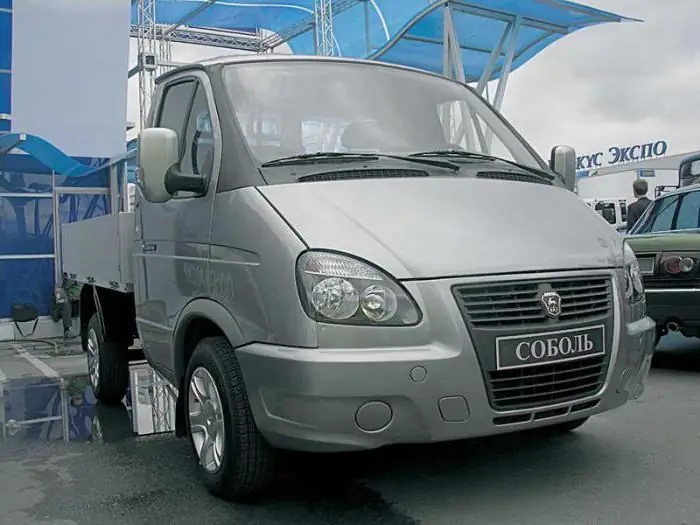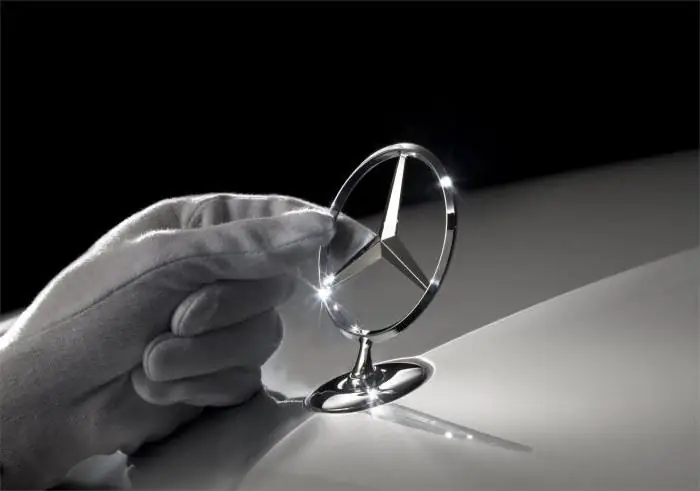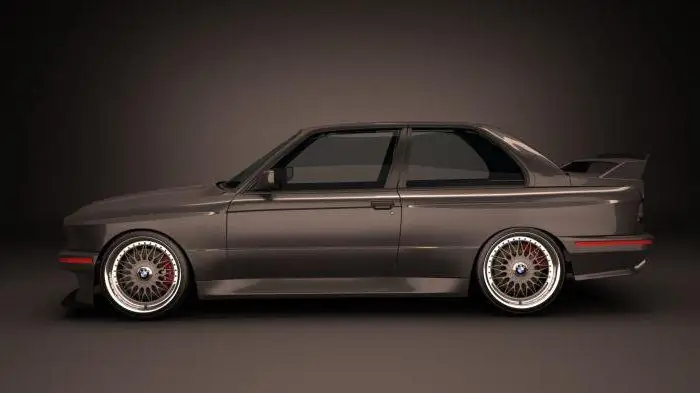2025 Author: Erin Ralphs | [email protected]. Last modified: 2025-01-22 21:14:14
The revolutionary "three-ruble note", introduced in 1990, replacing the previous E30 model and released under the slogan Ultimate Driving Machine, fully corresponds to the description of the Bavarian car.
History
This model was in production until 2000, until the new E46 completely forced it out of the market. Today, unfortunately, there are few good copies left. A high-quality BMW E36 316i of those years will cost more than many new products. For example, the new Opel Astra G will cost much less. The positive difference of this BMW is that it gives great driving pleasure, which covers some cons and problems.

Appearance
The BMW 316i itself is larger and heavier than its predecessor. The coupe version looks more sporty. Those wishing to buy a two-door model should take into account that each body part of the coupe has its own: the hood is 80 mm longer, and the roof is 130 mm longer. The dimensions of the BMW 316i are 4.32 x 1.64 x 1.38 m. The total weight is 1065 kg.
The main feature of the model was branded overhangs, well distinguished from the front.

Various modifications were present in production, starting with a convertible andending with a hatchback. The BMW 316i Compact hatchback has become popular due to its compactness. The convertible, in turn, was not in demand in the CIS countries.
BMW 316i specifications
A variety of engines were installed on this model. We will talk about the least powerful modification. The BMW 316i engine allows you to reach 100 km / h in 12.7 seconds, while having a power of only 102 hp. With. The latter was not always well appreciated by brand lovers, but the motor deserved the quality mark. Subject to the operating rules, even the replacement of rings will be needed only after 300,000 km. The engine itself is moved closer to the cabin, which provides the sedan with an ideal weight distribution along the axles.
Most of the BMW 316i produced have a five-speed manual transmission that owners say is very reliable. Every 20,000 km, an oil change is required in the box and the main pair.

The steering is informative, there is a hydraulic booster. Steering rack replacement is required every 150,000 km. Anti-lock wheel system is present in the base.
The paint work carried out on the model is commendable, but time is taking its toll. At the moment, the vast majority of BMW 316i are broken to varying degrees, so you need to pay due attention when buying a car. The places most susceptible to corrosion are the rear shock mounts, the lower edges of the doors and sills, the trunk lid and the rear fenders.
Detailed characteristics are presented in this table.
| Key Features | |
| Power | 102 l. s. |
| Engine size | 1766 cm3 |
| Body style | Sedan (E36) |
| Max speed | 182 km/h |
| Number of cylinders | 2 |
| Acceleration from 0 to 100 km\h | 12 c |
| Fuel consumption (combined) |
8, 6L / 100km |
| Sizes | |
| Length | 4.320mm |
| Width | 1.640mm |
| Height | 1.380mm |
| Distance from front to rear axle | 2.570mm |
| Clearance | 110mm |
| Drive | |
| Drive type | Rear |
| Mass | |
| Curb | 1.065 kg |
| Permissible | 1.525 kg |
| Brakes | |
| Front | Disc |
| Rear | Drums |
| Performance | |
| Tank capacity | 55 l |
| Luggage capacity | 425 l |
| Tire sizes | 175/70TR14 |
| Seats | 4 |
| Corrosion Warranty | 6 years |
Pendant
I would like to mention the stereotypes that have arisen among the owners of the opinion about the unreliability of the suspension. The weakest link in the BMW suspension is the driver.
The BMW 316i's rear multi-link suspension performs well at corner entry at speed. Usually, before selling, the car owner does not spend money on repairing silent blocks, so the buyer often has to invest in repairs. German cars are considered to be among the cheapest in terms of content, but this is not about BMW. For example, shock absorbers and springs rarely require repair, but once a replacement is due, it will not cost two or three hundred dollars. Often, many drivers complain about the disadvantages of rear-wheel drive, namely in grip.
McPherson front struts are very durable: steering tips last up to 30,000-50,000 km, stabilizer bushings - 60,000 km, and silent blocks - up to 100,000 km at all.
It is worth mentioning the ABS system. All produced cars were equipped with it, but at the same time, warpage of brake discs and increased wear are far from uncommon. This problem has an expensive solution: buying expensive and high-quality brake pads or changing discs frequently.
Salon
The interior of the BMW 316i (whose photo is presented in the article) is not suitable for people who are looking for a spacious family car. The fact is that the driver is already between the door and the transmission tunnel, which contains not only the cardan, but also the exhaust system. The driver's seat is low. The landing is sporty, so that the passenger sitting behind the driver will be able to put his feet under the cushion of the front seat. The dashboard in this model is deployed towards the driver, and the gas pedal is floor, which is considered the hallmark of BMW cars.

The rear seats don't quite fit into a mid-range sedan. Due to the engine being moved closer to the center, the interior has decreased. The luggage compartment is 425 liters, which is already good, but all of the above affects the dimensions of the cabin.
Special attention should be paid to glass: the thickness of glass with a mechanical lift is 3 mm, and with an electric drive - 4 mm. Therefore, when replacing the glass, it simply may not fit into the grooves.
Used car prices
The price varies from 4000 to 6500 dollars - it all depends on the chosen year of manufacture of the car. For a 1991 car you will pay about 4 thousand dollars, and for a 1996 model - already 6-6.5 thousand dollars.

Expert reviews
This model justifies the quality of the German manufacturer. Recently, he has significantly reduced the price, but this did not affect the color in any way. In principle, everyone will be able to maintain a BMW car: there are enoughlicensed spare parts, as well as used spare parts. The main problem for the owner of the six-cylinder E36 can be overheating of the cylinder head, made of aluminum (all models were equipped with it from 1995 until the complete closure of production).
If we talk about four-cylinders, they do not shine with durability. Often, the power of the installed motors is simply not enough for reckless drivers. They try to squeeze everything they can out of them, and when they sell it, all that's left is junk.
As for diesel versions, they upset motorists. The engine alone is beyond repair.

All gearboxes deserve praise: both automatic and manual. They have earned the name "unkillable". After 150,000-200,000 km there are no problems at all. It will only be necessary to replace the backstage oil seal and the box shank oil seal. After 250,000 km, you need to change the flexible coupling of the driveshaft. If there is a problem, then most likely from time and possibly from the "torture" of many dashing "racers".
Verdict
The best model, according to many car owners and experts, was the six-cylinder BMW E36 with a 2.5-liter engine. Buying a four-cylinder has already lost all meaning. Why spend money on frequent replacement of the timing belt, if the car is considered by no means economical? But all motorists emphasize that the sedan of the third series has grace, strict lines and a wedge-shaped silhouette.
Recommended:
Hyundai Verna: specifications, photos and reviews of car owners

If you look at the photo of Hyundai Verna, it is noticeable that the model has an extraordinary appearance. It is she who makes the car recognizable on the road. However, only car owners from the amateur category feel sympathy for its design
Car 2310 GAZ: specifications, photos and reviews

The Sobol family of compact light-duty trucks appeared in 1998 and included minibuses of several modifications - GAZ-2310 flatbed and vans
Badges of car brands and names. German, American and Chinese car brands and their badges

Badges of brands of cars - how diverse they are! With and without a name, intricate and simple, multi-color and plain … And all are very original and interesting. So, since German, American and Asian cars are the most common and in demand, then using the example of their best cars, the topic of the origin of emblems and names will be revealed
BMW 540i car: specifications, photos and reviews

The article is dedicated to cars of the BMW 540i family. The characteristics of modifications, their features, user reviews, etc. are considered
BMW 3 series (BMW E30): specifications and photos

BMW E30 is a famous body. It has rightly become a classic. Well, indeed, at one time everyone knew about this car. And still many dream of buying it. So what should be said about this model in more detail

